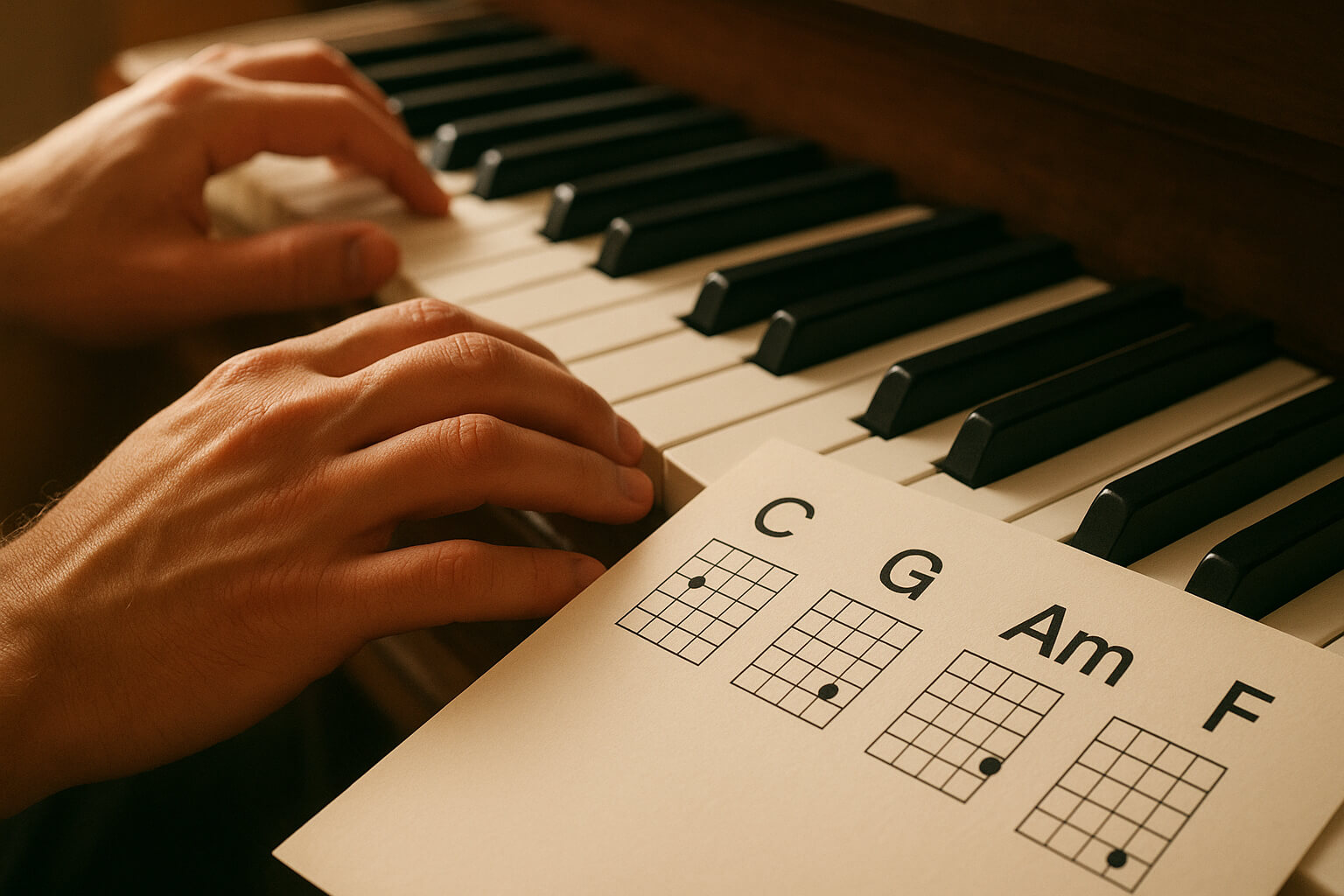August 14, 2025

Reading piano chord charts is one of the fastest ways to start playing real music — no sight-reading required. If you're tired of decoding traditional sheet music or just want to accompany your singing, chord charts offer a practical and intuitive solution. This guide will walk you through what piano chord charts are, how to read them confidently, and how to apply them in real songs.
A chord chart is a simplified form of music notation. Instead of showing you every note, it tells you which chords to play and when to play them. You’ll typically see chord names written above lyrics or aligned to beat divisions. These charts are especially common in pop, worship, rock, and jazz music.
Unlike classical sheet music, there’s no staff, no clefs, and no note heads. It’s just chord symbols and a rhythm guide — designed to get you playing fast.
To read a chord chart, you need to know how chord names are written. Each symbol you see represents a specific chord structure:
Each of these symbols is a shortcut — instead of showing every note, the chart expects you to know the chord structure or recognize it by practice.
Want to go deeper? Read: The Ultimate Guide to Music Reading for Beginners to get a strong foundation in symbols and theory.
Inversions are a big part of playing chords smoothly. You don’t always need to play a chord in root position (where the lowest note is the chord name).
Let’s say you're playing a C major chord. Instead of always playing it as C–E–G, you can flip it:
These changes make your hand movement more efficient and the transitions between chords sound more connected. Chord charts typically don’t tell you which inversion to use — that’s up to your ear, your arrangement, and what sounds smoothest in context.
Learn to hear these subtle differences with this training: Ear Training Exercises — How to Hear Chords and Melodies
Rhythm is just as important as harmony. Most chord charts include some kind of rhythm structure to show how long each chord should be played.
For example, if you see a line that says: C | G | Am | F
That usually means each chord lasts one full measure (four beats in common time). Sometimes you’ll also see slashes like: C / / /
Each slash indicates one beat, so the chord “C” should be held for four beats.
Advanced chord charts may use repeat signs, syncopated slashes, or even rhythmic stabs. But in general, the layout is simple — chords appear where they’re meant to be played. Just follow the progression and keep time.
If you're playing along with a band, staying on beat is more important than hitting every single inversion correctly.
Most popular music uses a handful of tried-and-true chord progressions. Recognizing these will help you play faster — because you won’t have to stop and decode every chord.
Here are a few must-know progressions (we’ll use C major as an example key):
Once you memorize these patterns, you’ll start predicting chords in real songs — and that’s when you really start playing, not just reading.
Want more help recognizing chord patterns? Use The Ultimate Beginner’s Music Learning Checklist to track your progress with real-world examples.
Don’t just rely on your eyes — train your ears too. Being able to hear a chord progression makes it easier to follow a chart or even improvise when something changes.
Here’s a simple ear training technique:
This will build your harmonic awareness, which is a critical skill for pianists in bands, churches, or jam sessions.
Expand your hearing with: How to Develop Perfect Pitch — Exercises and Training Methods
To get better at reading and applying chord charts, you can use these resources:
If you're recording or composing, check out Digital Audio Workstations Explained for help choosing the right software.
Also, if you're building a home setup for practice or songwriting, here’s a helpful resource: Building Your Home Studio — Essential Gear and Setup Guide
As you gain confidence, you'll go from slowly reading charts to playing by feel — with your eyes barely leaving the keyboard.
Stay up to date with the latest tips, expert insights, product reviews, and step-by-step guides to help you grow, create, and succeed—no matter your industry or passion.